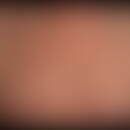Hierfür ist eine Anmeldung erforderlich. Bitte registrieren Sie sich bei uns oder melden Sie sich mit Ihren Zugangsdaten an.
Synonym(s)
Skin thickening due to actinic dermatitis
HistoryThis section has been translated automatically.
Miescher 1930
DefinitionThis section has been translated automatically.
Physiological adaptation mechanism of the skin (especially the epidermis) to repeated erythema-producing UV rays. The effective barrier is the stratum corneum. A fully developed light callosity forms after 2-3 weeks of repeated UVB irradiation and leads to an increase in MED by a factor of 4-5. It persists for weeks. This effect cannot be induced by UVA radiation.
You might also be interested in
ClassificationThis section has been translated automatically.
Epidermal hyperplasia is based on a proliferation-promoting effect of UV rays. The MAP(mitogen-activated protein kinase) signalling pathway can be activated by UVB in various ways, e.g. by phosphorylation of JNK (c-Jun N-terminal kinases) and p-38 (see MAP kinases below).
EtiopathogenesisThis section has been translated automatically.
Chronic or recurrent exposure to UVB rays causes thickening of the epidermis and horny layer.
HistologyThis section has been translated automatically.
Increased epidermopoiesis with acanthosis and hyperkeratosis.
LiteratureThis section has been translated automatically.
- Afaq F et al (2005) Photochemoprevention of ultraviolet B signaling and photocarcinogenesis. Mutation Res 571: 1523-173
- Berking C (2007) Photocarcinogenesis. dermatologist 58: 398-405
Disclaimer
Please ask your physician for a reliable diagnosis. This website is only meant as a reference.




